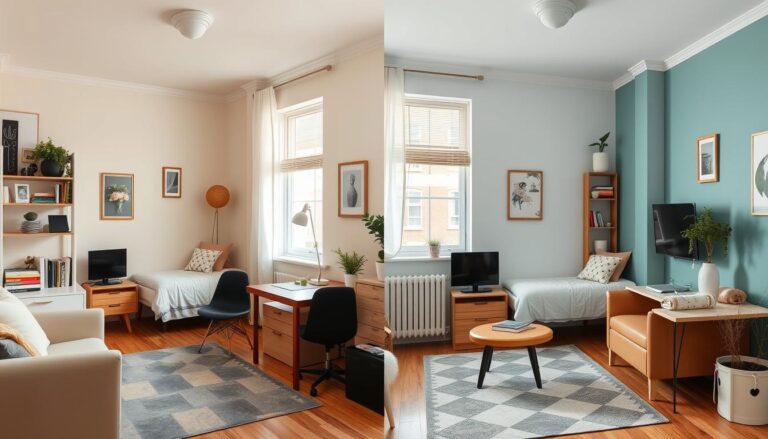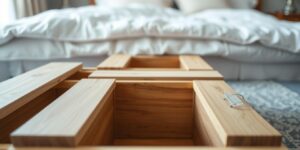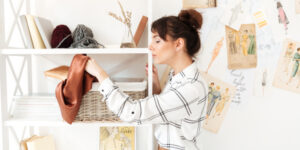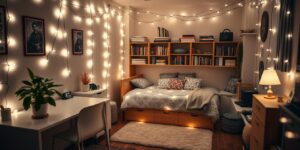DIY bulletin board ideas that double as wall art
Get creative with our DIY bulletin board ideas that double as wall art. Learn how to make your own unique boards with our step-by-step guide.
Blank walls don’t have to stay empty—or boring. A handmade organizational display combines practicality with creativity, letting you manage daily tasks while adding personality to your space. These projects work in any room, whether you’re tracking deadlines in a home office or displaying family photos in a kitchen.
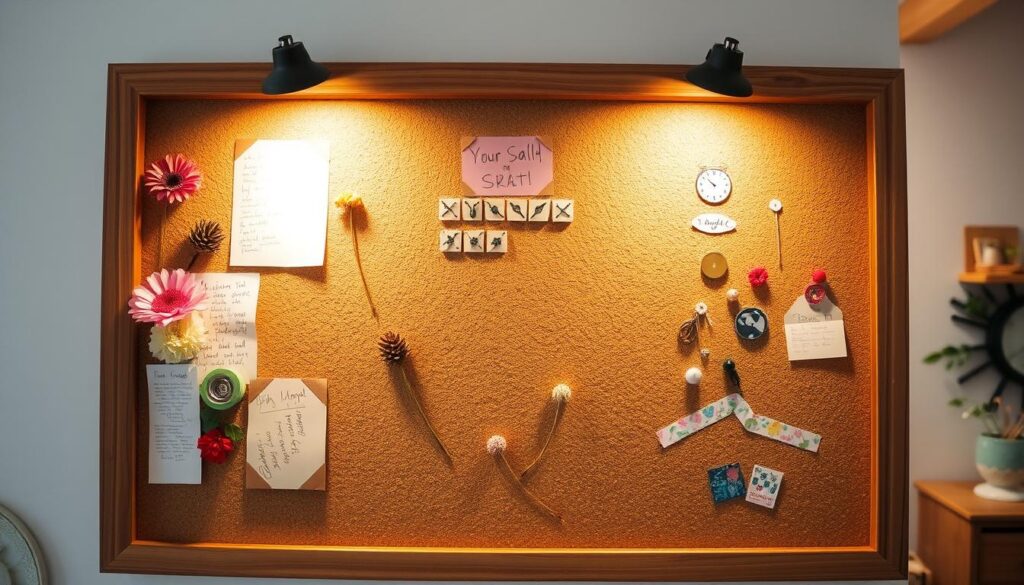
Affordable and adaptable, these boards let you repurpose materials like fabric, frames, or cork tiles. Choose colors and textures that blend with your decor, turning a simple tool into a stylish focal point. For example, a rustic wooden frame suits farmhouse kitchens, while metallic accents elevate modern living rooms.
Beyond holding notes, these displays can showcase artwork, habit trackers, or cherished mementos. They’re perfect for classrooms, bedrooms, or entryways—anywhere you need quick access to reminders. Best of all, they cost far less than store-bought wall decor.
Key Takeaways
- Combine organization and style with customizable boards for any room
- Use budget-friendly materials to match your existing decor themes
- Adapt designs for multiple spaces, from offices to kids’ rooms
- Display photos, lists, or artwork while keeping essentials visible
- Replace generic wall decor with functional, personality-driven pieces
Introduction and the Benefits of a DIY Bulletin Board
Transform your walls into functional masterpieces with surfaces that organize and inspire. Unlike digital tools that hide in pockets, physical displays keep priorities front-and-center. They blend seamlessly with your decor while offering practical solutions for daily life.
What Makes These Displays Stand Out?
Handmade organizational tools create a lasting connection between you and your tasks. The act of pinning notes or photos becomes a mindful ritual, reinforcing goals through touch and sight. Research shows physical reminders improve task completion rates by 30% compared to digital alerts.
These surfaces adapt to changing needs. Swap workout schedules for holiday cards, or project deadlines for vacation plans—all without losing their visual appeal. Their flexibility makes them ideal for growing families or evolving workspaces.
What Else Would You Like to Know?
Choose below:
Creative and Functional Home Accents
Choose materials that spark joy, like linen fabric or reclaimed wood frames. A well-designed display becomes a conversation starter, merging purpose with personality. In kitchens, they track meal plans. In bedrooms, they highlight gratitude lists.
Small spaces benefit most. Narrow hallways gain purpose with vertical organizers, while home offices use corner installations to maximize efficiency. Every addition serves dual roles: simplifying routines and elevating room aesthetics.
Exploring the Types of Bulletin Boards
Organizational displays come in various forms to suit different spaces and needs. From sleek minimalism to eye-catching accents, each style serves distinct purposes while enhancing room aesthetics. Understanding these options helps you choose the right solution for your walls.
Simple and Bordered Bulletin Boards
A basic cork surface offers fuss-free functionality. Its neutral appearance blends into modern offices or kitchens without competing with other decor. Lightweight and affordable, it handles daily reminders effortlessly.
Framed versions add personality through borders. Use painted wood strips or patterned fabric edges to match your room’s palette. These trims protect cork edges while creating visual structure—ideal for coordinating with gallery walls.
Vertical and Themed Designs
Tall narrow layouts transform unused wall areas. A floor-to-ceiling installation showcases calendars, artwork, and photos in compact entryways. Pair with floating shelves for layered storage solutions.
Thematic displays adapt to seasons or hobbies. Swap botanical prints for holiday motifs, or academic charts for travel maps. Consistent color schemes maintain cohesion despite changing content.
| Type | Best For | Customization |
|---|---|---|
| Simple Cork | Modern spaces | Minimal |
| Bordered | Coordinated decor | Frame materials |
| Vertical | Narrow walls | Height variations |
| Themed | Seasonal changes | Color schemes |
Why Create a DIY Bulletin Board?
Combining practicality with personal flair transforms ordinary tools into meaningful additions to your home. Custom surfaces offer more than just note-pinning space—they become extensions of your lifestyle and aspirations.
Smart Savings Through Crafting
Crafting your own organizational tool saves money while sparking creativity. Materials like cork sheets, fabric remnants, and recycled cardboard cost less than pre-made alternatives. A basic 24″x36″ handmade version costs under $15 compared to $50+ store-bought models.
These projects use readily available supplies:
- Recycled frames from thrift stores
- Remnant fabric from craft stores
- Industrial cork rolls
Reflecting Your Unique Vision
Choose textures and patterns that mirror your personality. A linen-covered surface suits minimalist spaces, while bold geometric fabrics energize modern offices. Seasonal updates take minutes—swap autumn leaf motifs for winter plaits without replacing the entire piece.
One maker shared: “My kitchen command center tracks meal plans using chalkboard paint and vintage postcards. It’s functional art that makes daily routines joyful.”
Handcrafted displays evolve with your needs. Start with basic cork, then add magnetic strips or ribbon grids as requirements change. This adaptability ensures lasting relevance in dynamic households or workspaces.
DIY bulletin board ideas for Home Decor
Turn high-traffic areas into organized hubs with surfaces that manage daily routines while complementing your decor. These customized solutions keep essentials visible without cluttering countertops or desks.
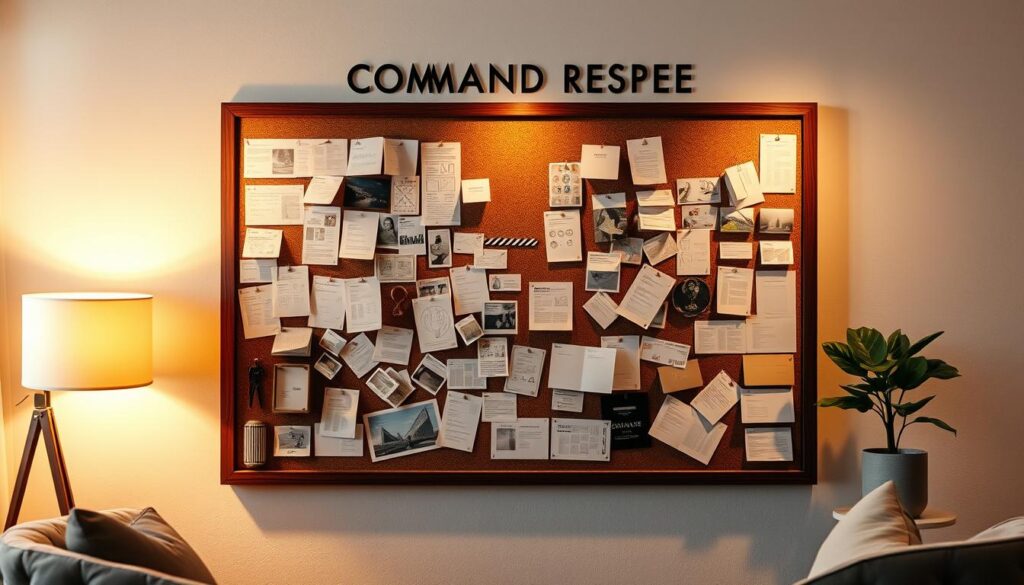
Designing a Command Center in Your Kitchen or Study
Kitchens benefit from centralized planning stations that combine meal calendars, shopping lists, and family memos. Position your surface at least three feet from cooking appliances for safety. Use washable fabrics like vinyl or laminated cotton for easy cleaning near food prep zones.
In study areas, choose calming colors and textured materials to reduce visual noise. A linen-covered panel above desks holds schedules and inspiration quotes without overwhelming small rooms. Add batting beneath the fabric to prevent pin marks on cherished photos or documents.
One homeowner shared: “Our wall-mounted system stores mail bins and recipe binders. It turned chaotic mornings into smooth routines.” Consider adding vertical pockets for pens or shallow shelves for frequently used items.
For family collaboration, dedicate lower sections to children’s artwork or chore charts. Magnetic strips hold keys, while cork areas display school notices. This approach transforms blank walls into interactive tools that serve multiple generations.
DIY Bulletin Board Ideas for Office and Classroom Use
Workspaces thrive when information flows smoothly. Customizable surfaces bridge functionality and aesthetics in offices and classrooms, adapting to diverse needs while maintaining visual harmony.
Enhancing Workspaces with Custom Boards
Magnetic surfaces bring sophistication to corporate environments. Their sleek appearance handles documents and memos without compromising professional decor. For creative spaces, natural materials like cork or reclaimed wood add texture while softening harsh office lighting.
Effective layouts use zoning strategies:
- Left third for monthly calendars
- Center area for active project timelines
- Right section for quick-reference checklists
Adapting Ideas for Temporary and Permanent Setups
Educators often need flexible displays that move with lesson plans. Tri-fold panels secured with removable adhesives allow quick classroom reconfigurations. One teacher noted: “Our science unit boards travel between labs and homerooms—students always know where to find current materials.”
Permanent installations gain versatility through modular designs. Grid-style ribbon systems let users rearrange sections as priorities shift. Combine wipe-clean surfaces with fabric pockets in high-traffic areas to balance durability with accessibility.
Step-by-Step Guide to Making Your DIY Bulletin Board
Crafting your own organizational display requires precision and creativity. Follow these methods to build surfaces that handle daily tasks while maintaining wall-friendly installation.
Essential Supplies for Successful Assembly
Start with a tri-fold foam display board—its lightweight structure works for most rooms. You’ll need fabric (3″ larger than your board), a hot glue gun, and damage-free hanging strips. Washable materials like laminated cotton suit kitchens, while textured linens add office sophistication.
Building Durable and Attractive Surfaces
Secure the foam board’s flaps with hot glue to prevent sagging. Lay your chosen material face-down, positioning the board centrally with equal overhang. Pull fabric taut as you staple every 2 inches along the back edges.
Fold corners like wrapping a gift, creating crisp angles without bulk. Double-check tension across the surface before final stapling—wrinkles reduce functionality. One crafter notes: “Tugging diagonally from corner to corner ensures smooth results.”
For installation, pair two Command Strips at each top corner. Press firmly for 30 seconds to activate adhesive bonds. Test weight capacity by hanging a light item before adding heavier objects.
Tips for Personalizing Your DIY Bulletin Board to Reflect Wall Art
Transform functional surfaces into artistic statements by blending practical materials with decorative flair. The right combination turns everyday organizers into eye-catching features that complement your interior design.
Selecting Fabric, Paint, and Decorative Borders
Fabric choice anchors your design. Opt for textures and patterns that align with your room’s aesthetic—linen for minimalist spaces or floral prints for cozy kitchens. Stores like Joanne’s offer budget-friendly options under $3 per yard, making experimentation affordable.
Borders define the piece’s character. Try burlap ribbon for rustic charm or metallic trim for modern edge. A Denver-based designer notes: “Painting the frame in a contrasting hue adds depth without overwhelming smaller rooms.”
Prioritize durability. Washable cotton works well in high-traffic areas, while heavyweight canvas suits offices. Avoid thin materials that sag under frequent pin changes.
Creative accents elevate basic designs:
- Stencil geometric patterns along edges
- Layer ribbon grids over fabric backdrops
- Attach removable decals for seasonal updates
These elements merge practicality with artistry, ensuring your creation serves dual purposes. As one maker shared: “My floral-print surface hides a calendar grid—it’s pretty enough for the living room but keeps our family organized.”
Conclusion
Transform everyday organization into creative expression with surfaces that balance function and style. These customizable displays keep essentials visible while enhancing your room’s aesthetic—proving practical tools can be beautiful additions to modern living spaces.
Affordable materials like fabric remnants and repurposed frames let anyone craft professional-looking organizers. Whether building a command center for kitchens or designing motivational office displays, projects adapt to any space. Temporary mounting solutions protect walls, making updates simple when needs change.
Weekly refreshes maintain relevance—swap workout charts for vacation plans or rotate seasonal artwork. This regular review cycle keeps spaces feeling intentional while supporting evolving routines. Strategic placement near high-traffic areas ensures daily utility without sacrificing visual harmony.
Through thoughtful fabric choices and color schemes, each creation becomes an extension of personal taste. The result? Spaces that make sure life flows smoothly while reflecting individual flair—no blank wall required.
FAQ
How can a functional piece also serve as decorative wall art?
What materials are needed to build a custom board on a budget?
Can these setups work in high-traffic areas like kitchens?
Are temporary installations possible for renters or classrooms?
How do themed designs improve workspace efficiency?
What techniques help match the board to existing room decor?
The Best Colors to Make Your Student Apartment Feel Bigger
» See exclusive tips for your home


